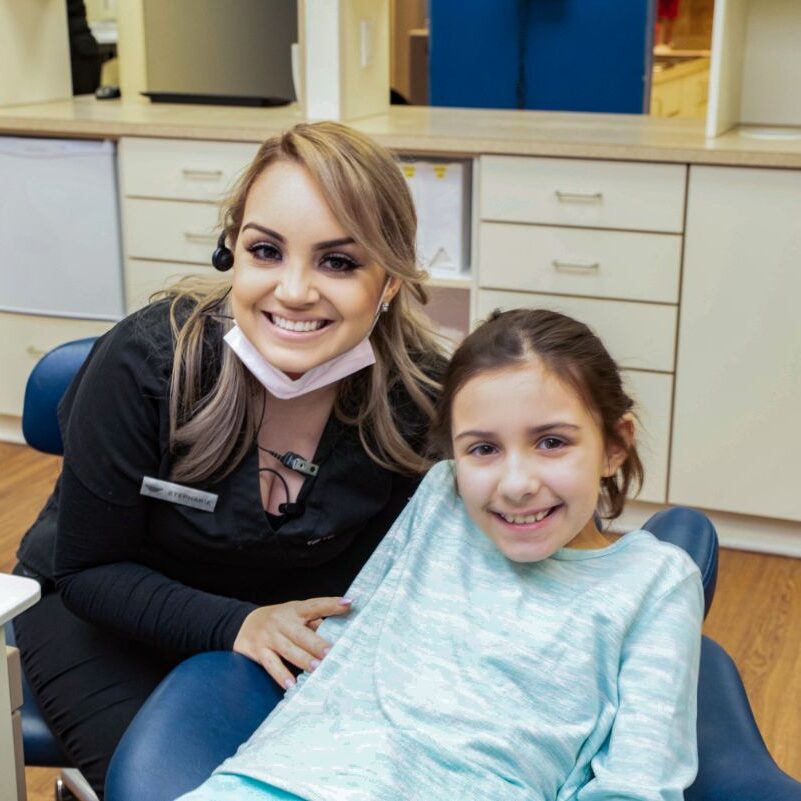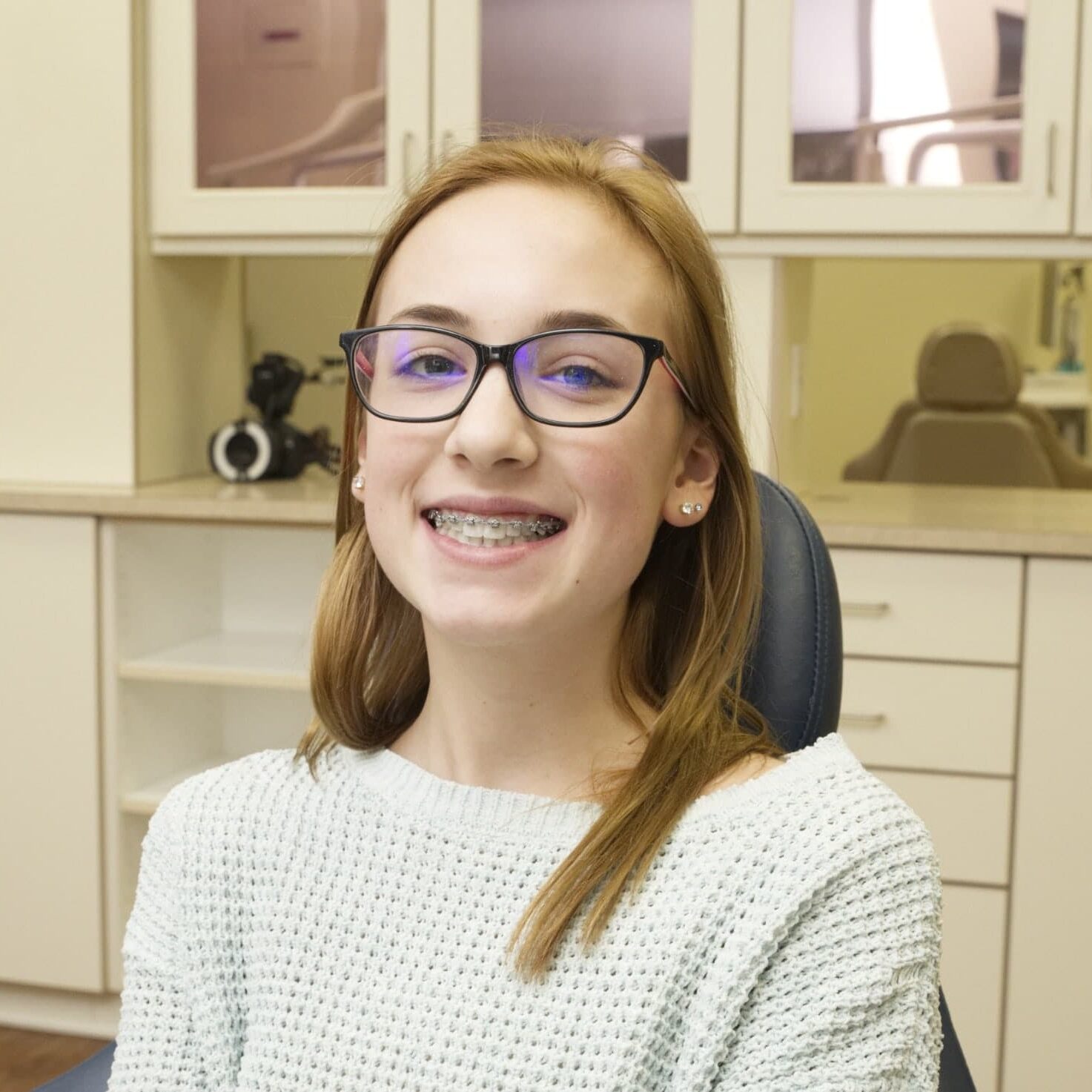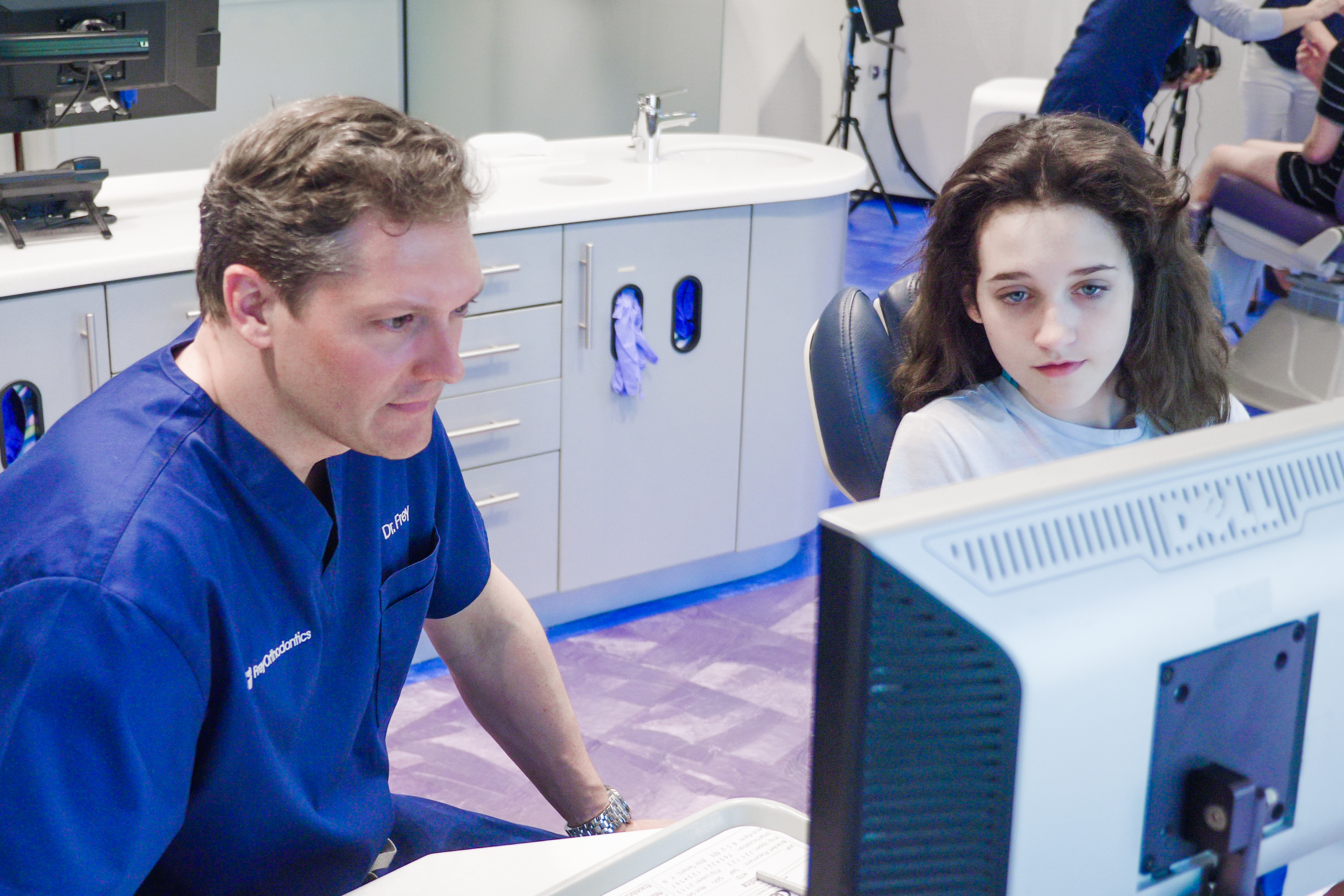Get a Beautiful Smile at Any Age
Children, Teens & Adults
Get a Check-Up By Age 7
Orthodontics for Children
As a parent, you want the best for your child. That includes healthy teeth and a pleasing smile. At Frey Orthodontics, our goal is to treat your children as if they were our own, by providing them with the best possible orthodontic care.

Learn More About Orthodontics for Children
All Kids Should Get an Orthodontic Check-Up By Age 7
To have a smile that's long-lasting and, more importantly, healthy, your child needs teeth and jaws that are properly aligned - in other words, a healthy bite. The American Association of Orthodontists recommends that your child get an orthodontic check-up no later than age seven. By then, your child's teeth have developed enough that subtle problems can be spotted with jaw growth and emerging teeth, while some baby teeth are still present.
This check-up may reveal that your child's bite is fine and braces for kids aren't necessary. Or, Dr. Frey may identify a developing problem but recommend monitoring your child's growth and development, and then, if indicated, begin treatment at the appropriate time for your child. In other cases, Dr. Frey might find a problem that can benefit from early treatment.
What Is Early Treatment?
Early treatment may prevent or intercept more serious problems from developing and may make treatment at a later age shorter and less complicated. In some cases, Dr. Frey can achieve results that may not be possible once the face and jaws have finished growing.
Choosing the Optimal Time for Treatment
While the age at which kids get braces may vary, orthodontic treatment most often begins between the ages of 9 and 14, and some orthodontic problems are easier to correct if they are treated early. If it appears that treatment will be needed, your orthodontist can advise you as to the ideal time to begin. This gives your orthodontist the best chance to:
- Guide jaw growth
- Lower the risk of trauma to protruding front teeth
- Correct harmful oral habits
- Improve appearance and self-esteem in your child
- Guide permanent teeth into a more favorable position
- Create a more pleasing arrangement of teeth, lips and face

Between the ages of 12 and 16
Orthodontics for Teens
The teen years (between the ages of 12 and 16) are the most common time for orthodontic treatment because most permanent teeth will be in place.
Luckily, there are some new solutions that work to make the treatment process much easier than ever before.

Learn About Teen Orthodontics
Experienced orthodontists like Dr. Frey will also be able to easily recognize issues with spacing, crowding, bite, and alignment in this age range, and your teen’s bone and jaw structure are formed enough to allow orthodontic treatment to begin.
Some teens may have even started Phase I treatment at an earlier age, and are now following it up with full braces or other orthodontic treatment.
Beyond outward appearances, untreated dental problems can have a lasting impact on your teen’s oral and overall health.
If you notice any of the following issues, we recommend a complimentary consultation with Dr. Frey, since they could be signs your teen may benefit from orthodontic treatment.
- Early, late, or irregular loss of their baby teeth
- Difficulty with chewing or biting
- Crowding or extra spacing between teeth
- Jaws that shift or make sounds
- Frequent biting of the cheek or the inside of the mouth
- Teeth that meet abnormally or not at all
- Jaws and teeth that are out of proportion to the rest of the face
- Protrusion of teeth
Diagnosing and successfully treating certain bite problems can have short-term and long-term benefits. Problems classified as “bad bites” can often be minimized with the proper orthodontic treatment, including:
- Crooked or crowded teeth
- Missing or extra teeth
- An overbite or underbite
- Incorrect jaw position
- A disorder of the jaw joint
Straight teeth that respond well to orthodontic treatment carry a number of benefits, including:
- Being less prone to wear and tear, chipping, and tooth trauma
- Being easier to keep clean, helping to prevent tooth decay and cavities
- Reducing the chances of developing gum disease, which can result in bone loss, decay, and tooth loss
- Improving proper chewing and digestion of food

The treatment process
In the course of developing a customized treatment plan for your teen, we may recommend the use of an orthodontic appliance for a while. Here at Frey Orthodontics, we offer:
Clear Aligners
Clear aligner systems are made up of a series of fully customized, clear trays called aligners. These aligners are nearly invisible and totally removable.
Made of soft plastic, they provide a more comfortable orthodontic experience, with no friction or abrasions inside your teen’s mouth.
Each week your teen will switch their aligner for the next in the set. When worn the recommended 20-22 hours per day, your teen’s teeth will gradually move into the desired positions.
Invisalign works best for mild to moderate orthodontic issues, and may not be an option if your teen needs more serious treatment.
Metal Braces
Braces have come a very long way, even within the past decade. When many people think of braces they think of extremely bulky metal brackets.
We don't use this type of bulky orthodontic appliance and many of the new braces are lighter and more comfortable than ever before.
How long does treatment take?
This is a question with no concrete answer, unfortunately. Every case is different, but the average length of the active stage of orthodontic treatment is anywhere from 6-36 months.
After this phase of treatment is complete, your teen will need to wear a retainer for as long as Dr. Frey feels is necessary based on their individual case. We work as a team with both parents and teen to create a smile that will last a lifetime.
Can teens still play sports?
Absolutely. If your teen athlete is wearing more traditional braces, it’s crucial to protect their smile in order to stay on track with their treatment. We strongly recommend that they use an orthodontic mouthguard to protect their braces, and their mouth, from any potential injury. Y
our teen can play any contact sport if they use the proper orthodontic mouthguard.
If your teen has Invisalign, teens using this system can simply take their aligner out before practice or a game, and put it back in afterward.
What About Musicians?
Traditional metal braces might affect the way your teen plays some instruments.
Invisalign is an excellent alternative treatment because removing their aligner before playing gives them no limitations.
Invest In Your Teen's Smile
Orthodontic treatment is an investment in your child’s future. By scheduling a free consultation, Dr. Frey will be happy to discuss the benefits of treatment with both of you, as well as any of the risks with putting off or skipping treatment.
Although adults can successfully complete orthodontic treatment, a teen’s jaws and teeth can respond quicker to orthodontic treatment, shortening their total treatment time.
Get a beautiful smile at any age
Braces for Adults

Learn More About Adult Orthodontics
You’re never too old to benefit from orthodontic treatment. Today, adults make up about one in every four orthodontic patients. Here’s why:
Looking Good
Orthodontic treatment can help correct crooked teeth or spaces that you’ve been self-conscious about for years. It can give you the confidence and pride that come with straight teeth and a great smile.
Teeth Can Shift
Believe it or not, tooth movement doesn’t stop in adolescence. Teeth that seemed straight and aligned in youth could have shifted later in life. This can lead to jaw pain, trouble brushing, or a smile you’re left unhappy with.
Maintaining Dental Health
Leaving misaligned teeth untreated may lead to other dental problems such as tooth decay and gum disease, as well as abnormal wearing of tooth surfaces and difficulty in chewing. Orthodontic treatment can help you keep good dental health.
Why Is Orthodontic Treatment Important for Adults?
- Can help prevent or improve periodontal problems
- Can help prevent or reduce further bone loss around teeth
- Improves ability of the dentist to restore missing teeth
- Improves aesthetics for a better smile and facial appearance
- Improves function of teeth
- Improves self-confidence and self-esteem
- Improves oral health